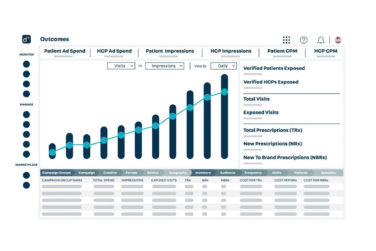PM360 asked public relations experts how companies can deal with the spread of COVID misinformation and handle other crises that may come their way. Specifically, we wanted them to address:
- What role can PR play in helping spread accurate information about COVID and potential treatments and vaccines? What are the best methods for accomplishing this? And how can PR help alleviate people’s concerns about the vaccine?
- When a life sciences brand or company is facing negative publicity, what are some of the best tips for how to effectively manage the crisis? What are the best ways to help recover a brand’s reputation? What common missteps should be avoided?
 Public relations plays a critical role in separating COVID-19 fact from fiction, but we’re up against several obstacles, including: deliberate disinformation from bad actors and spurious experts; varying levels of science literacy in the general population and the media; and institutional pressures to play up today’s story rather than acknowledge that scientific certainty is hard-won and emerges over time.
Public relations plays a critical role in separating COVID-19 fact from fiction, but we’re up against several obstacles, including: deliberate disinformation from bad actors and spurious experts; varying levels of science literacy in the general population and the media; and institutional pressures to play up today’s story rather than acknowledge that scientific certainty is hard-won and emerges over time.
To overcome these challenges, we have to rebuild trust in science by communicating validated research, interpreted and delivered by experts that are recognized by their peers. These stories must be appropriately qualified to acknowledge research limitations and transparent regarding sources and sponsorship.
We must also strive to democratize the science by reaching out to a global audience and engaging a diverse and representative range of expert voices to explain the data in direct terms. Together, scientific experts and communicators need to find common language for informing the public without scare tactics or unwarranted optimism over transient findings.
Because of the magnitude and urgency of the pandemic, expanding scientific literacy requires a full-court press. By following the science, leveraging a diverse range of expert voices, and using all channels, those receptive to scientific communications will get the message—and share it with others.
 While the PR playbook is deep and wide for healthcare crisis communications, COVID-19 presents a unique situation in our lifetime. As the disease continues to devastate countries, there is an equally virulent spread of confusion, conspiracy theories, and fear.
While the PR playbook is deep and wide for healthcare crisis communications, COVID-19 presents a unique situation in our lifetime. As the disease continues to devastate countries, there is an equally virulent spread of confusion, conspiracy theories, and fear.
As professional communicators, PR can recalibrate the situation to put the focus squarely on science. Rather than funneling resources into branded campaigns, pharma PR teams should leverage their skills and connections to create an above-brand coalition of scientists and epidemiologists who can drive an evidence-based public health campaign. We need to engage trusted voices on both a national and grassroots level to educate not only about the virus, but the tests, vaccines, and treatments coming to market.
It’s essential we involve behavioral scientists to help us identify and address the barriers, beliefs, and cultural challenges embedded in different communities. A single messaging template won’t work. Once we fully understand the many factors driving skepticism and mistrust, we can tailor the message architecture and channels to be relevant and effective for each audience. This will be critical even post-vaccine, when we will have to communicate the continued importance of masks and distancing until the virus is eradicated.
 Successful PR strategies are part of an ongoing proactive program to establish a brand’s reputation for trust, accountability, and expertise in its solutions. It’s difficult to make this happen quickly, reactively, or under the cloud of a pandemic. PR systematically and continuously delivers the story that serves as the shock absorber through uncertain times. Companies within the life sciences industry that have worked to build solid brand reputations over time and have proved to be a dependable resource to the media will be trusted to clarify misinformation about COVID-19.
Successful PR strategies are part of an ongoing proactive program to establish a brand’s reputation for trust, accountability, and expertise in its solutions. It’s difficult to make this happen quickly, reactively, or under the cloud of a pandemic. PR systematically and continuously delivers the story that serves as the shock absorber through uncertain times. Companies within the life sciences industry that have worked to build solid brand reputations over time and have proved to be a dependable resource to the media will be trusted to clarify misinformation about COVID-19.
To become a respected source, brands need to provide clear public statements and thought leadership about COVID-19 progress and recommendations. The ongoing integrated communications will include regular updates on websites, social media, and in the trades and mainstream health media channels that stakeholders use to access news, health information, and engage with others.
Once a vaccine is approved, those in the healthcare sphere will need to engage in thoughtful strategies to inform the public about their role in bringing it to fruition. To substantiate aspirations and instill public confidence, the tools include a combination of publishing data, transparent commentary, and sharing with news outlets behind-the-scenes insights regarding quality assurance.
 Expect the unexpected. While you can’t anticipate every crisis situation, you can have strategies in place that best prepare you, your leadership, and your organization to manage a crisis event.
Expect the unexpected. While you can’t anticipate every crisis situation, you can have strategies in place that best prepare you, your leadership, and your organization to manage a crisis event.
Who’s in your war room? Identify your key stakeholders and their roles. While these may be dependent on the specific situation, your core stakeholders should be consistent and understand their role in a crisis situation. It is also a good idea to identify a crisis communications agency/consultant that you can quickly bring in if necessary.
When crisis strikes, stay true to your company’s mission statement and values—and reinforce them. Also, the media, and your customers, know when you are hiding something so transparency (and if necessary, accountability) is the best approach.
Control the narrative. Monitor and assess the situation but don’t hide from it. Identifying how and through what channels to reach your audience is key, but equally important is the timeliness of your response. Keep your organizational leaders engaged but make sure you have all the facts before your spokespeople address the media.
Conduct a post-mortem. After the storm, set aside time to determine what worked well and what can be improved to better prepare you for the future.
 Product contamination, serious adverse events, and executive compensation used to send shivers down the spines of life sciences executives. While these situations may negatively impact business, what used to be big news, just isn’t big news anymore—for now.
Product contamination, serious adverse events, and executive compensation used to send shivers down the spines of life sciences executives. While these situations may negatively impact business, what used to be big news, just isn’t big news anymore—for now.
Last year put “crisis” into perspective with countless businesses closing, millions losing their livelihoods, and hundreds of thousands even losing their lives to the pandemic. 2020 turned what used to be a “crisis” into…a shoulder-shrugging meh.
That said, at some point the world will normalize and businesses should be prepared. Here are a few tips:
- Assume something will go pear-shaped. Have a plan that addresses every perceivable scenario.
- Be careful not to confuse an issue with a crisis. It’s important not to overact to avoid making matters worse and calling unwarranted attention to a situation. It’s equally important not to underreact. Find a communications expert to help you determine an appropriate level of response.
- Messaging and honesty are key. People forgive mistakes more readily if they think you’re sincere, working to correct the situation, and working to prevent reoccurrence.
In a nutshell, have a plan, hire a professional, and be honest.
 Three common missteps I see companies take during a crisis are having the legal department run communications, failing to consider stakeholders’ emotions, and mixing facts with assumptions. While many crises have legal implications, lawyers need to collaborate with communicators in a crisis-response team to reduce reputational risk to the company. A damaged reputation can significantly undermine valuation, future juries, and a company’s ability to serve people with illness.
Three common missteps I see companies take during a crisis are having the legal department run communications, failing to consider stakeholders’ emotions, and mixing facts with assumptions. While many crises have legal implications, lawyers need to collaborate with communicators in a crisis-response team to reduce reputational risk to the company. A damaged reputation can significantly undermine valuation, future juries, and a company’s ability to serve people with illness.
At the start of any issue or crisis, the crisis response team goes into action, determining facts and stripping away the assumptions that undermine positioning. Communications must work with the team to create understanding of the audience’s current emotional state and their likely response to potential messages. Building a team that conveys facts, but also shows empathy and considers stakeholders’ needs goes a long way in mitigating the impact of a crisis.
It is also important to remember you can’t talk your way out of a behavior problem. Assessing the company’s role in creating the crisis, considering solutions, and making changes to company behavior will have a positive impact on reputation.








